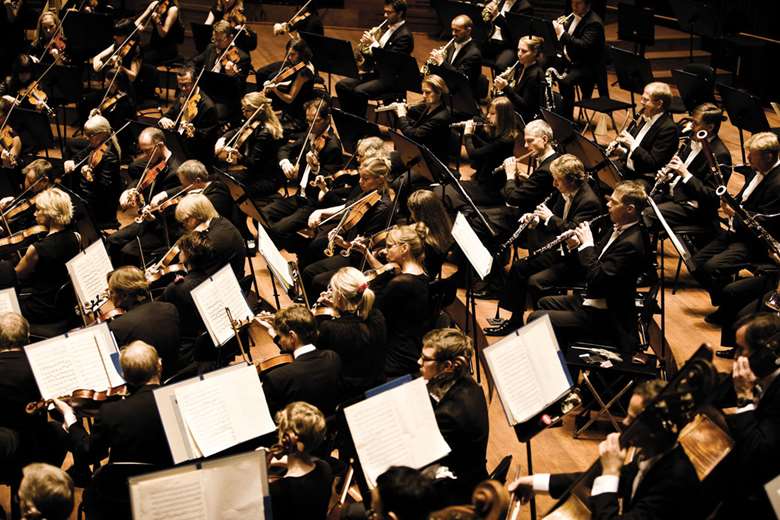Orchestra insight: Royal Danish Orchestra
Andrew Mellor
Thursday, October 25, 2018
Our monthly series telling the story behind an orchestra

When a musician joins the Royal Danish Orchestra, he or she is allocated a number. John Dowland’s was 140, Carl Nielsen’s 647 and Thomas Søndergård’s 959. The history of the world’s oldest musical ensemble is extraordinary, the list of conductors it has worked with even more so: Kleiber (E), Walter, Knappertsbusch, Monteux, Schoenberg, Stravinsky, Stokowski, Ormandy, Furtwängler, Fricsay, Karajan, Klemperer, Kubelík, Barbirolli, Bernstein, Boulez, Rattle and many more. There is hardly an orchestra in Europe – let alone Scandinavia – that can match it.
‘People told me that this was an orchestra to work with’, said Mariss Jansons in March while preparing for his debut with the ensemble. The orchestra’s sound – aristocratic yet highly dramatic – has multiple roots: age and tradition, work in the theatre (it is predominantly the orchestra of the Royal Danish Opera and Ballet) and privileged access to a stash of priceless instruments, which means many of its string players are using Strads and Guarneris.
Constanze Mozart believed the orchestra played her husband’s works better than any other. Gramophone, too, has cited the ensemble’s spirit over the years. ‘There is plenty of excitement and brilliance’, wrote Robert Layton in 1965. ‘The Royal Danish Orchestra is the Vienna Philharmonic of the north with its forward, rich woodwind timbres’, commented Mike Ashman in 2009, reviewing the Copenhagen Ring cycle (MA also noted the ‘dark, wood sound’ of the orchestra in the Tannhäuser that followed).
Unsurprisingly, Nielsen has formed the backbone of the ensemble’s recording work: a pioneering Fourth Symphony from Igor Markevitch, a landmark Third from Leonard Bernstein and a full cycle from Paavo Berglund. The orchestra’s four orchestral concerts per year indulge its predilection for central European repertoire but it’s often in operatic interludes – from Madama Butterfly and Die Frau ohne Schatten to Lady Macbeth of the Mtsensk District and The Exterminating Angel – that it demonstrates its capacity for shattering depth and drama in collaboration with the acoustics of the new Copenhagen Opera House.
This September the orchestra and Royal Opera welcomed Alexander Vedernikov as Chief Conductor. Under entirely new management following a turbulent three years, we are told it will tour and record more, and a new Bruckner Symphony No 8 under Hartmut Haenchen has just been released. We may never see a repeat of March 8, 1970, when King Frederick IX of Denmark conducted Beethoven’s Piano Concerto No 3 with his son-in-law Prince Henrik as soloist. But from her palace across the harbour, the Queen still keeps a watchful eye over Denmark’s cultural crown jewel.
Listen to our special playlist on Qobuz
Facts
Founded
1448
Home
Copenhagen Opera House
Chief Conductor
Alexander Vedernikov (from September 2018)
Predecessors
Paavo Berglund, Michael Schønwandt, Michael Boder











